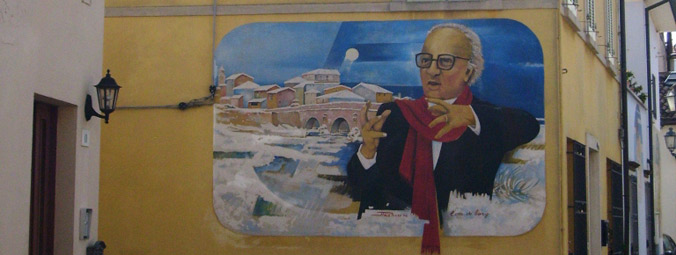Holiday Inn Hotel
Holiday Inn Rimini is located on the seafront, only a short distance from the historic centre, with a seaside view over one of the longest and fully equipped sandy beach in Europe. All rooms are sound-proofed and finely furnished with high quality facilities, including free internet wi-fi, moreover the Hotel has a private beach and a minigym area with sauna, turkish bath, solarium and massage rooms. The restaurant, located at the fifth floor, offers a breath taking view of 30 Km coast.
Rimini: a partial description
Everybody knows Rimini as a "good time place" – a lively, sunny seaside resort with a touch of charm. Rimini is notorious for its 30 km long sandy beaches, 230 lidos and 11 theme parks which together make up a kind of tourist village providing one of the most well-organized hospitality complexes in Europe. There are also over 1,000 hotels, ranging from the fairytale Grand Hotel to small family run B&B’s. However, at heart Rimini’s heritage is distinctly Roman, Ariminum, an artistic town with a history spanning 22 centuries forming the Kingdom of the Malatesta family.
Rimini is 1h drive from Bologna International Airport and 40 minutes away from Formula 1 circuit in Imola. It has Roman monuments, such as Tiberio's bridge, Augusto Arch, and Tempio Malatestiano, a renaissance jewel and in the neighbouring areas fascinating fortresses, magical medieval villages such as Republic of San Marino, Gradara, San Leo, the ancient city of Urbino and Pennabilli.
Roman and Renaissance monuments are also in evidence in porticoes and alleyways in the historic centre of the town, in particular The Augusto Arch, built by emperor Augustus in 27 BC. Close to the main square is one of the masterpieces of the Renaissance, the Malatesta Temple (1449), with its almost luminous white facade designed by Leon Battista Alberti. The Temple was meant to be a grand mausoleum for Sigismondo Malatesta and his young lover and wife-to-be, but unfortunately he fell into disrepute and the Temple was never completed. Inside it holds works by artists such as Giotto and Piero della Francesca. The second symbol from the Renaissance time is the fairytale Castel Sismondo. This tangible proof of the power of the Malatesta dynasty has been skilfully restored and now hosts art exhibitions. Dating back to the roman empire is the Tiberius' Bridge, so well-preserved that it still bears the weight of the busy city traffic after two thousand years and two World Wars.
As a seaside city, Rimini still preserves the ancient small fishing town called Borgo San Giuliano with its colourful murals describing scenes from real life and famous characters living there such as the well-know film director Federico Fellini.

Finally, some words about the food, which is an important part of the culture. The main aromas are that of the piadina (the typical unleavened bread of Romagna) cooked on a flat terracotta pan and that of grilled fish from the Adriatic sea. Piadina is often tasted with a local cheese, the squaquerone, very soft and fresh, together with rucola, a kind of salad. A local famous matured cheese is the dicth's cheese, formaggio di fossa in italian, obtained by the fermentation in the seasoning ditch of the local cheese. Restaurants offer several rolled by hand pasta (i.e. home-made) mixed with a great variety of sea food, like tagliolini allo scoglio, maybe rock/reef tight noodle in English, or strozzapreti, priest-chokers in English, whose shape, according to a legend, resembles a short, twisted bit of rope, that signified a religious rebellion in the region long suffered under Papal rule from the 13th to 19th century. Last but not least another genuine product coming from the local hills, the red wine Sangiovese, one of the Romagna symbols.
For further information on Rimini please visit About Rimini.